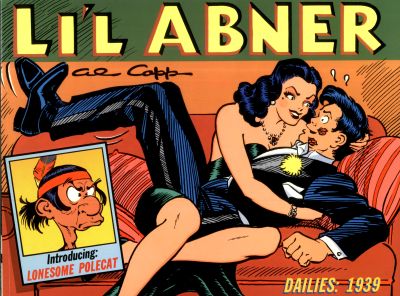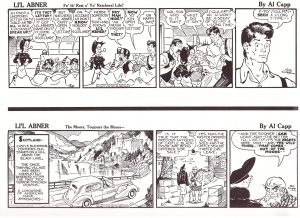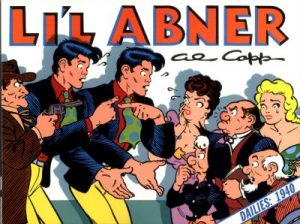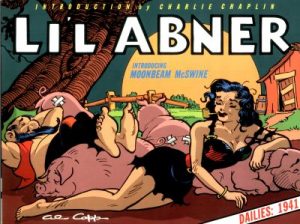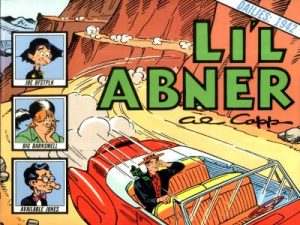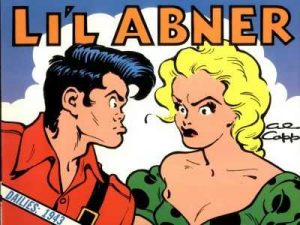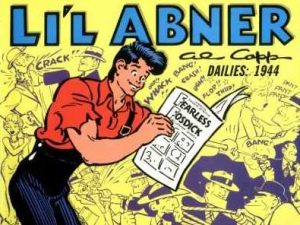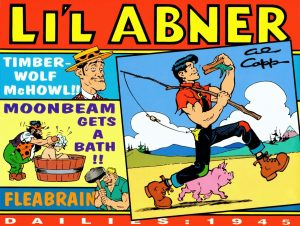Review by Frank Plowright
Introduced in 1934, L’il Abner continually improved for three years, then stalled, or even slipped backward, with only Al Capp’s art continuing the upward quality trajectory. The expressions, panel compositions, character designs and visual asides are already excellent, and would improve still further, but when it comes to the plots, Capp’s heading around in circles. In addition to several variations of the mainstay plot of whether or not Abner might marry someone else before Daisy Mae, 1939 sees another outing for Abner’s doppelganger Gat Garson, again depositing Abner in prison, where he’s already ended up in the opening story. Readers would be familiar with sundry other repeated touches. In his introduction Dave Schriener attributes it to Capp becoming dissatisfied with soap opera comedy and striving for something more individual. That’s certainly borne out by the abrupt ending to the opening sequence of Abner and Freddie Flophouse, another case of changed identity. There’s some additional confusion caused by Kitchen Sink printing some strips in the wrong order. An erratum slip was attached to page 33, but with only used copies now available it may no longer be present in all books.
It would be a while still before Capp’s surreal satire properly evolved, but there are hints, not least a sequence about a missing King determined to make what others would consider an unsuitable marriage. It echoes the real life circumstances of the UK’s Edward VIII, and there’s no sighting of Abner himself over a month’s worth of continuity. Abner is left in a puzzling situation, and while the eventual revelation weeks later is clever, it’s not the type of trick readers would accept repeatedly. However, just when it seems Capp’s dried up, again having Aunt Beatrice summon Abner to New York to make a gentleman of him, he supplies the year’s best sequence. Meeting a ghost who needs to sort his complicated affairs out before he can depart the mortal realm, the good-hearted Abner resolves to help him out. It’s different, funny and charming, and when it seems likely to drop into yet another story of Abner almost married, Capp pulls the plug effectively.
Mother Ratfield, Mammy Yokum ironing Pappy’s trousers with him still in them, her cutting his toenails (twice) and the Dogpatch bus make for some great funny images, and while some repeated ideas may lack sparkle, Capp ups his game for the annual Sadie Hawkins Day sequence. He takes a month of strips to build up to it, and twelve days for the chase, and they’re his best yet.
By this point in his career Capp was also writing a second strip, Abbie an’ Slats, a more serious ongoing drama beautifully drawn by Raeburn Van Buren, who brought a career’s experience as an illustrator to the feature. Before heading into the Abner strips there’s an article about that with eleven strips and examples of Van Buren’s earlier illustrations, none of which is to be missed. Li’l Abner, though, has stalled. Will there be an improvement in Volume Six?
